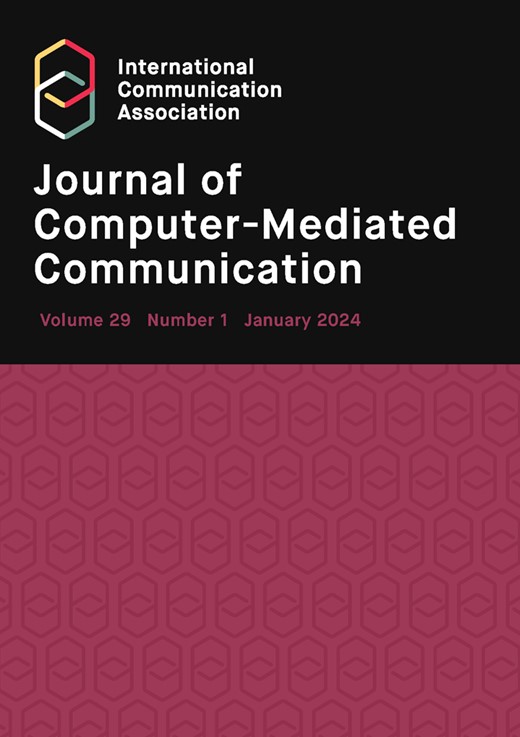Capturing social presence: concept explication through an empirical analysis of social presence measures
IF 5.7
1区 文学
Q1 COMMUNICATION
引用次数: 8
Abstract
Initially the province of telecommunication and early computer-mediated communication (CMC) literature, multiple systematic reviews suggest “social presence” is now used for an increasingly diverse set of phenomena across various communication settings. Drawing upon Chaffee’s (1991) description of concept explication as the dialectic process between the conceptual and operational aspects of research, this study provides a mixed methods analysis of social presence measures to evaluate construct validity and inform a modified conceptual definition. Results reveal several distinct constructs commonly measured in the empirical literature on social presence, including salience, perceived actorhood, co-location/non-mediation, understanding, association, involvement, and medium sociability. Based on the frequencies and co-occurrences of these constructs within instruments and across different research fields, we conclude that social presence, in practice, most commonly consists of the perceptual salience of another socialactor. Implications for the measurement and theorizing of social presence—and its distinction from other social experiences with media—are then considered.捕捉社会存在:通过社会存在测量的实证分析来解释概念
最初,在电信和早期计算机媒介通信(CMC)文献领域,多个系统综述表明,“社会存在”现在用于各种通信环境中越来越多样化的现象。借鉴Chaffee(1991)将概念解释描述为研究的概念方面和操作方面之间的辩证过程,本研究提供了一种混合方法分析社会在场测量来评估结构效度,并为修改概念定义提供信息。结果揭示了在实证文献中通常测量的几种不同的社会存在结构,包括显著性、感知行为、共定位/非中介、理解、关联、参与和中等社交性。基于这些结构在不同的研究领域和工具中的频率和共同出现,我们得出结论,在实践中,社会存在最常见的是由另一个社会参与者的感知显著性组成。然后考虑社会存在的测量和理论化的含义,以及它与其他媒体社会经验的区别。
本文章由计算机程序翻译,如有差异,请以英文原文为准。
求助全文
约1分钟内获得全文
求助全文
来源期刊
CiteScore
9.60
自引率
2.80%
发文量
26
期刊介绍:
The Journal of Computer-Mediated Communication (JCMC) has been a longstanding contributor to the field of computer-mediated communication research. Since its inception in 1995, it has been a pioneer in web-based, peer-reviewed scholarly publications. JCMC encourages interdisciplinary research, welcoming contributions from various disciplines, such as communication, business, education, political science, sociology, psychology, media studies, and information science. The journal's commitment to open access and high-quality standards has solidified its status as a reputable source for scholars exploring the dynamics of communication in the digital age.

 求助内容:
求助内容: 应助结果提醒方式:
应助结果提醒方式:


